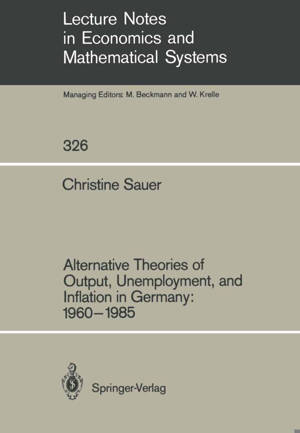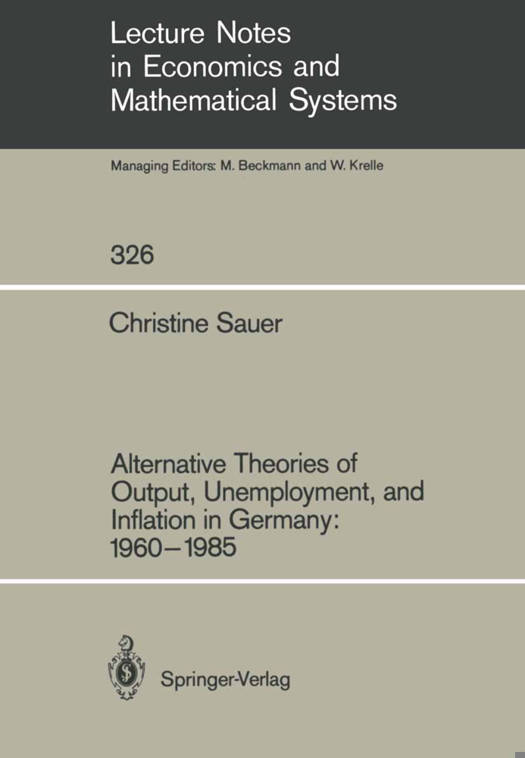
- Afhalen na 1 uur in een winkel met voorraad
- Gratis thuislevering in België vanaf € 30
- Ruim aanbod met 7 miljoen producten
- Afhalen na 1 uur in een winkel met voorraad
- Gratis thuislevering in België vanaf € 30
- Ruim aanbod met 7 miljoen producten
Alternative Theories of Output, Unemployment, and Inflation in Germany: 1960-1985
Christine Sauer
€ 139,95
+ 279 punten
Omschrijving
by Jerome L. Stein Disenchantment with Keynesian econollics developed during the post-1968 period when the rate of growth of output declined, the rate of unemployment rose, and the rate of inflation increased in the U.S. and in other countries. This paradox, called stagflation, was inconsistent with the tenet of Keynesian economics that cyclical movemants in prices and output relative to their respective trends are positively correlated. A search occurred for a more satisfactory theory of macroeconomics which could explain the paradox of stagflation and the observed economic phenomena. The New Classical Economics (NCE) developed as the total rejection of Keynesian economics. The Keynesians claimed that their demand management policies contributed to the obsolescence of the business cycle and successfully eliminated the gap between full employment (potential) output and actusl output. The NCE argued just the opposite: the unemplo nt rate or growth rate of real output is insensitive to systematic demand management policies [Lucas; Sargent and Wallace].
Specificaties
Betrokkenen
- Auteur(s):
- Uitgeverij:
Inhoud
- Aantal bladzijden:
- 206
- Taal:
- Engels
- Reeks:
- Reeksnummer:
- nr. 326
Eigenschappen
- Productcode (EAN):
- 9783540509080
- Verschijningsdatum:
- 8/03/1989
- Uitvoering:
- Paperback
- Formaat:
- Trade paperback (VS)
- Afmetingen:
- 170 mm x 244 mm
- Gewicht:
- 367 g

Alleen bij Standaard Boekhandel
+ 279 punten op je klantenkaart van Standaard Boekhandel
Beoordelingen
We publiceren alleen reviews die voldoen aan de voorwaarden voor reviews. Bekijk onze voorwaarden voor reviews.










